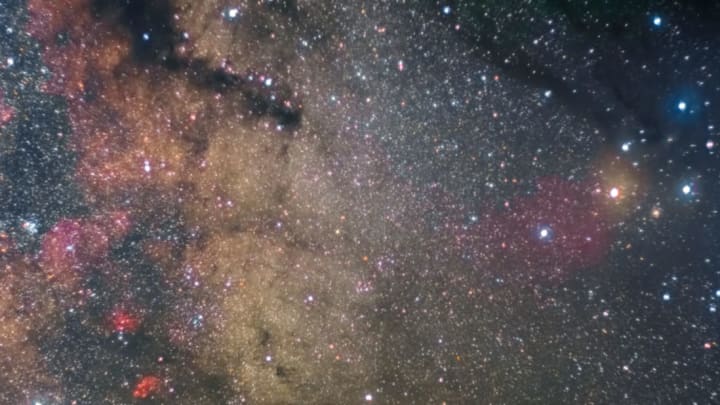Back in 2010, Zooniverse, the world's largest citizen science research platform, launched Planet Hunters at Yale University. The group of citizen scientists use data from NASA's Kepler Space Telescope to search for drops in brightness of distant stars, which could indicate potential new planets crossing in front of them. In 2011, they found something really unusual: a distant star with intriguingly bizarre behavior.
Now Yale astronomer Tabetha Boyajian—along with several citizen scientist co-authors—has published a paper in the Monthly Notices of the Royal Astronomical Society about the star, KIC 8462852, which has a flickering pattern unlike anything astronomers have seen before. The highly unusual data have even led some scientists to speculate that alien activity could be a factor.
The data show several substantial dips in the brightness of the light from KIC 8462852, which suggests that there is a "tight formation" of objects circling the star. While the flux was relatively constant throughout the 4-year period observed during the survey, it was punctuated by a number of substantial dips, including one 15 percent dip around day 800 of the survey, and a whole sequence of dips—one of them reaching a depth of 22 percent—about day 1500. As Slate reports, even a dip caused by the transit of a Jupiter-sized planet is usually less than 1 percent. Moreover, this behavior would not be unusual if KIC 8462852 were a young star surrounded by dust and debris, but it isn't.
The report offers various possible explanations for this unusual activity, including "instrumental effects or data reduction artifacts" (issues with the equipment or glitches caused by cosmic rays) or the "aftermath of giant impact in planetary system" (colliding planets on unstable orbits), but Boyajian tells The Atlantic that nothing they came up with is bulletproof: "We were scratching our heads. For any idea that came up there was always something that would argue against it."
The findings were so "weird," Boyajian said, that they assumed something must've gone wrong during data collection. "We thought it might be bad data or movement on the spacecraft, but everything checked out," Boyajian told The Atlantic.
Others have more speculative ideas. Upon seeing Boyajian's data, Penn State astronomer Jason Wright and colleagues began working on a paper with an alternate interpretation, one that involves a "swarm of megastructures" built by aliens to harness energy from the Sun. Called Dyson Spheres, the structures appeared in science fiction novels as early as 1937. The term was later coined by noted physicist Freeman Dyson. While the structures themselves only exist in theory, scientists like Wright have not ruled out the possibility.
"When [Boyajian] showed me the data, I was fascinated by how crazy it looked," he told The Atlantic. "Aliens should always be the very last hypothesis you consider, but this looked like something you would expect an alien civilization to build." Sarah Kaplan of The Washington Post notes that the star is "about 1481 light-years away from Earth," which means that if these hypothetical aliens did build some structure, they did so a long time ago.
Wright has partnered with Boyajian and the director of the SETI Research Center at the University of California, Berkeley to develop a plan to further study KIC 8462852 using a radio dish to see if whatever is blocking the light "emits radio waves at frequencies associated with technological activity."
